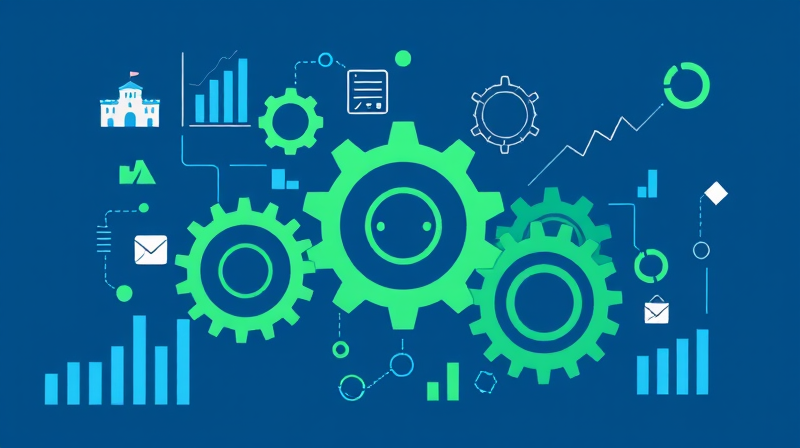Every day, organizations face the challenge of managing their daily needs while keeping costs under control. An effective buying plan not only streamlines procurement but also lays a strategic foundation for growth and sustainability. By following a clear and thoughtful approach, you can ensure that every purchase contributes to the overall success of your organization.
In this inspiring article, we explore a step-by-step process to develop a balanced and efficient buying plan. This guide is designed to empower you, whether you are a small business owner or part of a large organization, providing actionable tips that can transform your procurement process. Let's dive into the core elements that create a robust buying strategy.
Understand Your Organization's Needs
The first phase in crafting your buying plan involves a deep analysis of what your organization truly needs. Gathering accurate information about current demands and future requirements is crucial.
Start by surveying the needs across various departments. Engage in discussions with key stakeholders to determine their pain points and priorities. A thorough needs assessment will help you:
- Survey demand across departments
- Determine order periodicity
- Establish a realistic budget
- Define precise merchandise values
By identifying specific requirements, you can avoid unnecessary expenses and redirect savings towards investments that truly drive value.
Set Clear Objectives and Policies
Once you understand your organization’s needs, it is time to define your mission and develop policies that will govern the purchasing process. Clear objectives not only direct your efforts but also help maintain consistency and accountability.
Establish policy guidelines that include approval limits for different purchase amounts and create a process for soliciting competitive bids on larger purchases. A transparent policy framework will ensure that every procurement decision aligns with your organizational goals.
Some effective strategies include:
- Defining clear approval levels based on purchase value
- Implementing a step-by-step process to obtain competitive bids
- Ensuring that logistics and tracking are well-handled
These measures not only cut down on unnecessary bureaucracy but also enhance the efficiency and reliability of your procurement process.
Embrace Technology and Automation
In today’s fast-evolving business environment, technology plays an essential role in buying plans. The adoption of modern procurement tools can significantly streamline your operations. Automated systems reduce manual errors and speed up processing times, ensuring that your team can focus on strategic initiatives.
By transitioning from manual procedures to digital workflows, you can achieve:
- Enhanced data analysis capabilities
- Improved visibility of spending
- Faster procurement cycles
- Reduction in processing errors
Investing in user-friendly procurement software is more than just a time-saver; it's a step towards more intelligent and data-driven decision making.
Build Strategic Supplier Relationships
Suppliers are the backbone of any procurement process, and building strong, long-term relationships with them is essential. Healthy supplier relations can lead to better pricing, improved service, and enhanced product quality.
To cultivate reliable partnerships, you should:
- Identify and prioritize critical suppliers
- Engage in negotiations to secure favorable terms
- Establish performance metrics and review regularly
- Maintain open lines of communication
These relationships will not only help manage costs but also ensure a consistent supply of goods, even in challenging market conditions.
Prioritize Effective Time Management
Your buying plan is only as effective as your ability to manage time. Efficient scheduling is critical for maintaining a smooth procurement process. Adopting time management strategies can free up valuable resources that can then be re-invested into strategic planning.
Consider structuring your week by dedicating specific days to distinct procurement activities. This structured approach could include:
- Designated days for order consolidations and reviews
- Time-blocking for in-depth analysis and strategic planning
- Leveraging remote work days for focused analysis and research
By ensuring that every aspect of your buying plan receives proper attention, you ensure that no critical detail is overlooked.
Commit to Continuous Improvement
No plan is perfect, and continuous monitoring is the key to long-term success. Making regular assessments of both your procurement processes and supplier performance will help you identify opportunities for improvement. This commitment to refinement can lead to significant cost savings and operational efficiencies over time.
Regular reviews of your spending data and feedback from team members are vital. Look for actionable insights that can drive change such as:
- Conducting regular spend analysis to identify savings
- Evaluating supplier performance against market trends
- Soliciting stakeholder feedback to refine procedures
- Implementing continuous improvement initiatives based on real data
This proactive approach enables you to adapt to changes quickly and ensures that your buying plan remains dynamic and aligned with your organization’s evolving needs.
In conclusion, creating a well-rounded buying plan is a multifaceted process that demands clear goals, technological integration, strategic supplier relationships, robust time management, and a commitment to continuous improvement. Every step taken towards refining your buying process translates into better decision-making, increased efficiency, and significant cost savings for your organization. Embrace these strategies and be inspired to build a resilient procurement process that stands the test of time.







